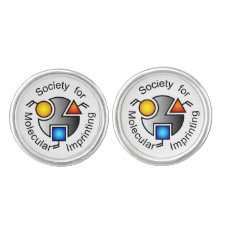
Authors: Esfandyari-Manesh M, Darvishi B, Ishkuh FA, Shahmoradi E, Mohammadi A, Javanbakht M, Dinarvand R, Atyabi F
Article Title: Paclitaxel molecularly imprinted polymer-PEG-folate nanoparticles for targeting anticancer delivery: Characterization and cellular cytotoxicity.
Publication date: 2016
Journal: Materials Science and Engineering: C
Volume: 62
Page numbers: 626-633.
DOI: 10.1016/j.msec.2016.01.059
Alternative URL: http://www.sciencedirect.com/science/article/pii/S0928493116300583
Abstract: The aim of this work was to synthesize molecularly imprinted polymer-poly ethylene glycol-folic acid (MIP-PEG-FA) nanoparticles for use as a controlled release carrier for targeting delivery of paclitaxel (PTX) to cancer cells. MIP nanoparticles were synthesized by a mini-emulsion polymerization technique and then PEG-FA was conjugated to the surface of nanoparticles. Nanoparticles showed high drug loading and encapsulation efficiency, 15.6 -¦ 0.8 and 100%, respectively. The imprinting efficiency of MIPs was evaluated by binding experiments in human serum. Good selective binding and recognition were found in MIP nanoparticles. In vitro drug release studies showed that MIP-PEG-FA have a controlled release of PTX, because of the presence of imprinted sites in the polymeric structure, which makes it is suitable for sustained drug delivery. The drug release from polymeric nanoparticles was indeed higher at acidic pH. The molecular structure of MIP-PEG-FA was confirmed by Hydrogen-Nuclear Magnetic Resonance (H NMR), Fourier Transform InfraRed (FT-IR), and Attenuated Total Reflection (ATR) spectroscopy, and their thermal behaviors by Differential Scanning Calorimetry (DSC) and Thermogravimetric Analysis (TGA). Scanning Electron Microscopy (SEM) and Photon Correlation Spectroscopy (PCS) results showed that nanoparticles have a smooth surface and spherical shape with an average size of 181 nm. MIP-PEG-FA nanoparticles showed a greater amount of intracellular uptake in folate receptor-positive cancer cells (MDA-MB-231 cells) in comparison with the non-folate nanoparticles and free PTX, with half maximal inhibitory concentrations (IC50) of 4.9 ± 0.9, 7.4 ± 0.5 and 32.8 ± 3.8 nM, respectively. These results suggest that MIP-PEG-FA nanoparticles could be a potentially useful drug carrier for targeting drug delivery to cancer cells
Template and target information: paclitaxel, PTX
Author keywords: molecularly imprinted polymer, Paclitaxel, Folate, nanoparticles, Targeting delivery, Cell culture



Join the Society for Molecular Imprinting

New items RSS feed
Sign-up for e-mail updates:
Choose between receiving an occasional newsletter or more frequent e-mail alerts.
Click here to go to the sign-up page.
Is your name elemental or peptidic? Enter your name and find out by clicking either of the buttons below!
Other products you may like:
 MIPdatabase
MIPdatabase









